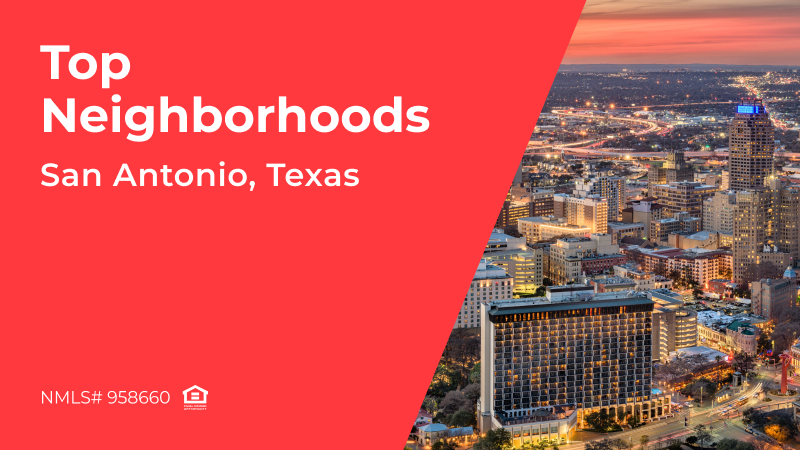The rural housing crisis in the United States is a growing problem that impacts millions of Americans. As of 2025, the shortage of affordable housing in rural areas has reached critical levels, with far-reaching implications for local economies, social stability, and community development. This crisis is characterized by a lack of affordable homes, an aging housing stock, and limited resources for new construction or renovations.
Rural America is home to approximately 60 million people. Many of them rely on modest incomes from agriculture, manufacturing, or service industries. The affordability gap is a significant concern. Lots of rural households spend more than 30% of their income on housing, leaving little room for other necessities. Compounding this issue is the limited availability of rental properties, with rural renters often competing for a small pool of units.
For mortgage brokers, this crisis presents both challenges and opportunities. Understanding the unique dynamics of rural housing markets and the factors contributing to the crisis is crucial. By addressing these challenges head-on, brokers can play a pivotal role in helping rural communities secure affordable and sustainable housing.
Recent Developments and Trends in Rural Housing Crisis
The rural housing crisis has seen significant developments in recent years, driven by economic, demographic, and policy changes. Understanding these trends is essential for mortgage brokers and stakeholders aiming to navigate and address the complexities of rural housing markets.
Rising Demand and Rural Gentrification
One notable trend is the rise in rural housing demand, fueled by remote work opportunities and an increased desire for more space and affordability. However, this influx of urban transplants has driven up property values and rents, outpricing many long-term rural residents. The phenomenon, often referred to as rural gentrification, has led to increased displacement and a growing wealth gap within rural communities.
Escalating Construction Costs
Another critical factor is the escalating cost of construction. Supply chain disruptions, labor shortages, and rising material costs have significantly increased the expense of building new homes or renovating existing ones. This has disproportionately impacted rural areas, where lower property values make high construction costs even less economically feasible.
Policy Efforts and Funding
On the policy front, there have been some efforts to address the crisis. The Biden Administration’s fiscal year 2025 budget proposed increased funding for USDA rural housing programs, including the Section 502 Guaranteed Loan Program and the Section 515 Rural Rental Housing Program. These initiatives aim to support affordable housing development and preservation. However, the scale of funding remains insufficient to meet the growing demand.
Demographic Shifts
Demographic shifts are also shaping rural housing markets. Aging populations in rural areas require housing that accommodates mobility challenges and other senior-specific needs. At the same time, younger generations are increasingly moving to urban centers for better career opportunities, leaving rural areas with shrinking workforces and housing demand concentrated among lower-income households.
Technological Advancements
Technological advancements have created both opportunities and challenges. While innovations like modular housing and prefab construction offer cost-effective solutions, limited internet access and outdated infrastructure in many rural areas hinder broader implementation.
These developments highlight the urgent need for tailored strategies that address the unique challenges of rural housing markets. Mortgage brokers have a critical role to play in leveraging available resources and advocating for policies that promote sustainable development and equitable housing opportunities.
Implications for Mortgage Brokers
Challenges in Rural Lending
The rural housing crisis poses unique challenges and opportunities for mortgage brokers. Understanding these implications is crucial for brokers seeking to effectively serve rural clients while navigating the complexities of these underserved markets.
One of the primary challenges is the limited availability of lending options in rural areas. Many financial institutions focus on urban markets, where higher property values and larger loan amounts offer greater profitability. As a result, rural borrowers often face fewer choices and less competitive rates. Mortgage brokers must work to identify lenders that offer products tailored to rural borrowers, such as USDA loans or state-specific rural housing programs.
Choose a top nationwide lender that cares about your growth!
Get Started
Accurate property appraisals also present a significant hurdle. In rural markets, the scarcity of comparable sales data makes it challenging to determine property values, leading to appraisal gaps that can derail loan approvals. Brokers must proactively address this issue by working closely with appraisers who have expertise in rural areas and by educating clients about potential valuation challenges.
Regulatory complexities further complicate the landscape. Federal programs like the USDA’s Section 502 Guaranteed Loan Program provide valuable resources. Still, navigating the application process can be cumbersome for borrowers unfamiliar with these options. Mortgage brokers play a vital role in simplifying these processes, guiding clients through eligibility requirements, and ensuring compliance with program guidelines.
Opportunities and Advocacy
Despite these challenges, the rural housing crisis also presents significant opportunities for brokers. As demand for rural housing grows, brokers who specialize in these markets can establish themselves as trusted experts. By offering personalized service and deep knowledge of rural housing programs, brokers can build long-term relationships with clients and gain a competitive edge.
Enhanced Broker Portal
that makes your job easier
- All operations at your fingertips
- Easy-to-use intuitive interface
- Integrated AI technology
Show Me How
Additionally, brokers have the opportunity to advocate for policy changes that benefit rural communities. Engaging with local stakeholders, participating in industry forums, and providing feedback to policymakers can help shape initiatives that address rural housing needs. By positioning themselves as both service providers and advocates, brokers can contribute to meaningful solutions while expanding their business opportunities.
In summary, the rural housing crisis requires mortgage brokers to adapt to unique challenges while leveraging opportunities to support underserved communities. By staying informed and proactive, brokers can make a significant impact in addressing the housing needs of rural America.
Strategies for Mortgage Brokers
Rural housing crisis requires mortgage brokers to adopt strategies that address the specific challenges and opportunities in these markets. By implementing these approaches, brokers can better serve rural clients while contributing to long-term solutions.
Leverage Federal Programs
Federal programs like USDA loans are a cornerstone of rural housing finance. The Section 502 Guaranteed Loan Program, for example, offers no down payment mortgages for eligible borrowers in rural areas. Brokers should familiarize themselves with the eligibility criteria, benefits, and application processes of these programs to guide clients effectively. Additionally, staying updated on policy changes and funding availability can help brokers maximize the benefits of these initiatives for their clients.
Build Local Expertise
Understanding the nuances of local markets is crucial for success in rural housing. Brokers should cultivate relationships with local appraisers, real estate agents, and community leaders to gain insights into property values, zoning regulations, and market trends. This knowledge allows brokers to provide accurate guidance and address client concerns specific to their communities.
Offer Creative Financing Solutions
In areas where traditional financing may not be feasible, alternative solutions can fill the gap. Options like construction-to-permanent loans, renovation loans, and private financing arrangements can help clients overcome barriers to homeownership. Brokers should explore innovative products and educate clients on how these options can meet their needs.
Advocate for Clients
Rural borrowers often face unique challenges, such as lower credit scores or irregular income patterns from seasonal work. Brokers can act as advocates by helping clients improve their financial profiles, gathering comprehensive documentation, and presenting strong cases to lenders. Tailored advice and proactive support can significantly improve approval odds.
Invest in Education and Marketing
Educating clients about available resources and debunking misconceptions about rural housing programs can build trust and increase engagement. Hosting workshops, creating informative content, and partnering with local organizations are effective ways to reach potential clients and establish credibility.
Choose a top nationwide lender that cares about your growth!
Get Started
By employing these strategies, mortgage brokers can effectively address the challenges of rural housing markets and support sustainable development in these communities.
Future Outlook
The future of rural housing in America is shaped by evolving economic, demographic, and policy trends. For mortgage brokers, understanding these dynamics is critical to adapting to changes and seizing opportunities in these markets.
Economic Trends
The rural housing market is expected to experience modest growth. Federal and state initiatives aim to address affordability and accessibility. However, persistent economic disparities between rural and urban areas will continue to pose challenges. Lower incomes, limited employment opportunities, and higher rates of poverty in rural regions may constrain housing demand unless accompanied by broader economic revitalization efforts.
Policy Developments
Federal housing policies are likely to expand support for rural communities in the coming years. The Biden Administration’s proposals for increased USDA funding and the expansion of programs like the Neighborhood Homes Investment Act could provide much-needed resources for rural housing development. These policies, if implemented effectively, may help bridge the affordability gap and stimulate new construction.
Technological Innovations
Advancements in modular and prefab housing technologies offer promising solutions for rural areas. These methods can reduce construction costs and timelines, making it easier to develop affordable housing. However, limited infrastructure and internet access in some rural areas may hinder widespread adoption. Mortgage brokers should stay informed about these innovations and advocate for their implementation where feasible.
Demographic Shifts
The aging population in rural America will drive demand for senior-friendly housing. Younger generations may continue to migrate to urban centers. Brokers can address these shifts by promoting housing options that meet the needs of older people and working to attract younger families through affordable financing solutions.
Environmental Considerations
Climate change and natural disasters increasingly impact rural housing, with floods, wildfires, and hurricanes damaging properties and displacing residents. Brokers should consider offering financing solutions that include disaster mitigation features, such as energy-efficient upgrades and resilient construction techniques.
Conclusion
The rural housing crisis in America is a complex and multifaceted issue. It is deeply rooted in economic disparities, aging housing stock, and underinvestment in rural communities. As 2025 unfolds, these challenges remain pressing. However, they also present unique opportunities for mortgage brokers to make a significant impact.
Ultimately, the path to alleviating the rural housing crisis requires collaboration among policymakers, industry professionals, and local communities. Mortgage brokers can be at the forefront of these efforts, contributing not only to their clients’ success but also to the economic revitalization and long-term sustainability of rural America. By embracing this mission, brokers have the opportunity to foster meaningful change while positioning themselves as trusted experts in an underserved market.



